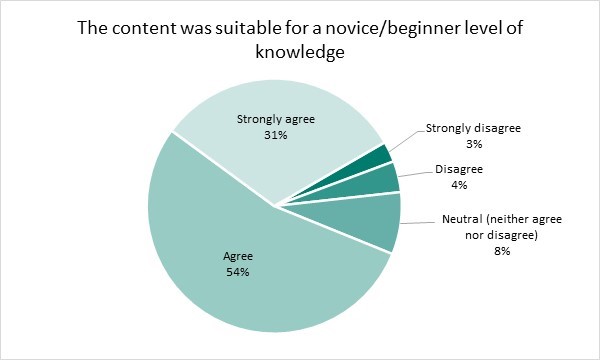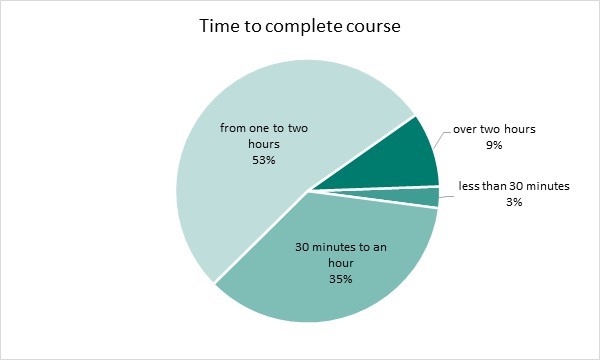Put your tray tables up and your seats in the upright position, because we are nearing the end of the N2N Project Pilot…
Work has continued at pace with the Novice to Know-How (N2N) Project (now officially renamed from Novice to Ninja) over the last few months. So far, the N2N team has commenced and completed Phase 1 (research and learning pathway design) and is deep into Phase 2 (content development).
Last month we also began Phase 3, embarking on a pilot to test the N2N delivery mechanism and training content of two online training courses: Introduction to Digital Preservation and Introduction to Bitstream Preservation. The first testing phase of the pilot took place 17th-28th February, followed by a small focus group held on 2nd March.
Last week we reviewed the responses from the surveys and group discussion, and are happy to report that the overall feedback has been generally very positive!
User satisfaction with the LMS was especially strong. Most respondents thought the login experience was easy (89.4%) and that it was easy to find and set up the courses (86.8%).
Participants were asked to identify their level of knowledge about digital preservation. The distribution of knowledge levels of the participants, illustrated in the graph below, shows a good balance with most (68.4%) identifying themselves as being at a novice, beginner, or basic level of knowledge.

Collecting this information about the knowledge levels was useful for assessing whether the content of courses was at the right level for the intended users of N2N. Indeed, 85% of survey respondents agreed or strongly agreed with the statement ‘The content of the course was appropriate (I felt the content was suitable for a novice/beginner level of knowledge)’.

The content and design of the courses were created with the aim that each course should not take more than two hours to complete—more than 90% of those who completed the courses were able to do so in under two hours.

We made sure to include several open-ended questions in the survey to gather additional feedback from participants. When asked what was done well, or what they enjoyed most, the responses we received offered a snapshot of the different learning styles and preferences of N2N users:
- “I prefer the text based content, reinforced through quizzes. The quizzes help me feel that I’ve understood the material, if I don’t score well then I know I need to go back over it.”
- “I was more actively engaged with reflective note-taking during the videos and interactive elements. Later on, where there were more sections of text to read through, the temptation was to read over, then copy and paste into a notes document rather than fully considering the content and articulating it in my own words”
- “The exercises that tested the key concepts without ever dragging into the specifics”
- “I liked the exercises which provided a clear walk through of processes. Step by step, click here and this is what you will see is most helpful for complete beginners who are trying to navigate an unknown process and not sure of what they should expect to see.”
- “No strong feelings either way as each section was focussing on different things and should probably be delivered in different ways”
The focus group, which brought together individuals from the different testing cohorts, added a more detailed and dynamic discussion to expand on points brought up in the surveys. For example, the group discussed potential issues with installing tools on secure networks. At the same time, one of the focus group participants mentioned her own surprise that she was able to access the courses at work where they have locked down government computers! It was also great to hear that one of the group found the online training to be a similar quality of learning experience as attending one of our “Getting Started with Digital Preservation” courses in person.
Specific points raised by participants were reviewed, and where issues were flagged the comments were constructive and manageable. A list of recommendations based on the feedback was created, and the next stages will incorporate them into the courses and LMS before Phase 3 commences the final deployment of the learning content.
It looks like clear skies ahead. The overall findings from the pilot—from a bird’s eye point of view if you’ll forgive another pun—give a positive outlook for the next stages of development.
We would like to again thank those 109 (!) volunteers who offered to help with the pilot. The level of interest illustrated by the unexpectedly large number of volunteers demonstrates that there is an appetite for online digital preservation training. Not only this, it has also provided us a list of future participants to help with later phases of the project!













































































































































